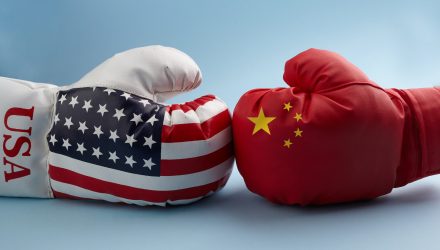With rising tensions between the U.S. and China, investors who are looking for a way to take advantage of the uncertainty can look to several ETFs according to analysts, especially when it comes to Ant Group’s planned Shanghai-Hong Kong dual listing.
The fintech-focused Alibaba affiliate said this week that it would be going public in what might amount to one of the largest initial public offerings in history, according to some estimates.
Up to this point, the world’s most sizable IPO was that of oil giant Saudi Aramco, which raised $25.6 billion in its late-2019 listing, just barely taking the title away from Alibaba’s $25 billion 2014 debut.
Although Ant Group plans to list in Shanghai and Hong Kong, U.S.-based investors may have ways to access the IPO’s potential gains, according to analysts.
One option would probably be Renaissance Capital’s International IPO ETF (IPOS), which invests in overseas companies that have recently gone public, explained Todd Rosenbluth, CFRA’s senior director of ETF and mutual fund research. According to Renaissance Capital, more than half of IPOS’ portfolio is filled with Chinese stocks. The company also has a U.S.-based ETF for IPOs, aptly named, IPO.
Both analysts agreed that broadening U.S.-China tensions have created some impediments to the China trade, but that hasn’t prevented U.S.-based investors from taking advantage of the uncertainty.
“There will be an opportunity for U.S. investors to find ways and to find vehicles overseas to get access if they absolutely need to get access to a security like this,” Hempstead said. “But … the geopolitical tensions are definitely going to be an issue going forward and it’s something to keep a very close eye on.”
To Rosenbluth, “this is the benefit of what ETFs offer, for U.S.-listed investors to get exposure to harder-to-access international markets,” he said.
“So, even though it won’t list here from an individual stock perspective, U.S. ETF investors are the winner again and again and again,” Rosenbluth said.
For more market trends, visit ETF Trends.
